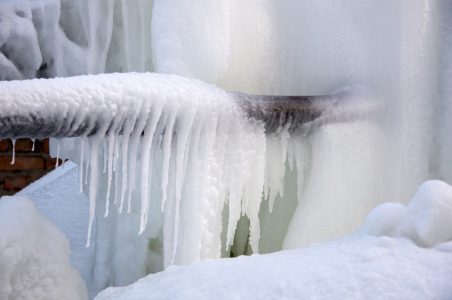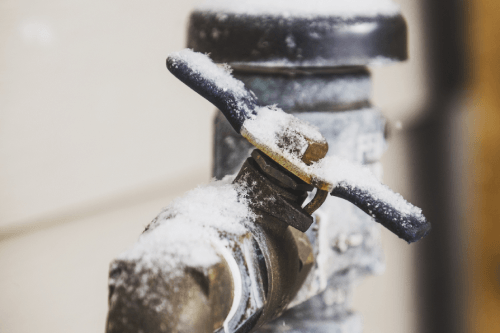Shielding Pipes from Freezing Damage: Key Approaches
Shielding Pipes from Freezing Damage: Key Approaches
Blog Article
How do you actually feel about How to prepare your home plumbing for winter weather?

Cold weather can damage your plumbing, specifically by freezing pipes. Right here's just how to avoid it from happening and what to do if it does.
Intro
As temperature levels drop, the danger of icy pipelines increases, potentially causing pricey repairs and water damage. Understanding how to avoid frozen pipes is critical for homeowners in cool climates.
Understanding Frozen Pipes
What causes pipes to ice up?
Pipelines ice up when subjected to temperatures below 32 ° F (0 ° C) for extended durations. As water inside the pipelines ices up, it expands, putting pressure on the pipeline wall surfaces and potentially creating them to rupture.
Risks and problems
Icy pipes can bring about water system interruptions, home damage, and costly repair work. Ruptured pipes can flood homes and create comprehensive architectural damage.
Indications of Frozen Piping
Determining icy pipelines early can prevent them from rupturing.
Exactly how to recognize icy pipes
Search for reduced water circulation from taps, uncommon smells or sounds from pipelines, and visible frost on exposed pipes.
Prevention Tips
Insulating susceptible pipes
Wrap pipes in insulation sleeves or use heat tape to shield them from freezing temperatures. Concentrate on pipes in unheated or outside areas of the home.
Heating strategies
Keep interior spaces sufficiently heated up, especially locations with pipes. Open closet doors to enable warm air to flow around pipes under sinks.
Protecting Exterior Plumbing
Yard hose pipes and exterior faucets
Disconnect and drain pipes garden pipes before wintertime. Install frost-proof spigots or cover exterior faucets with protected caps.
What to Do If Your Pipelines Freeze
Immediate actions to take
If you presume icy pipes, keep faucets open up to alleviate stress as the ice thaws. Make use of a hairdryer or towels taken in warm water to thaw pipes slowly.
Long-Term Solutions
Structural adjustments
Think about rerouting pipes away from exterior walls or unheated areas. Include added insulation to attic rooms, cellars, and crawl spaces.
Updating insulation
Purchase top notch insulation for pipelines, attics, and walls. Correct insulation aids preserve consistent temperature levels and lowers the danger of frozen pipes.
Verdict
Stopping frozen pipelines needs proactive actions and fast reactions. By comprehending the reasons, signs, and preventive measures, homeowners can shield their plumbing throughout winter.
5 Ways to Prevent Frozen Pipes
Drain Outdoor Faucets and Disconnect Hoses
First, close the shut-off valve that controls the flow of water in the pipe to your outdoor faucet. Then, head outside to disconnect and drain your hose and open the outdoor faucet to allow the water to completely drain out of the line. Turn off the faucet when done. Finally, head back to the shut-off valve and drain the remaining water inside the pipe into a bucket or container. Additionally, if you have a home irrigation system, you should consider hiring an expert to clear the system of water each year.
Insulate Pipes
One of the best and most cost-effective methods for preventing frozen water pipes is to wrap your pipes with insulation. This is especially important for areas in your home that aren’t exposed to heat, such as an attic. We suggest using foam sleeves, which can typically be found at your local hardware store.
Keep Heat Running at 65
Your pipes are located inside your walls, and the temperature there is much colder than the rest of the house. To prevent your pipes from freezing, The Insurance Information Institute suggests that you keep your home heated to at least 65 degrees, even when traveling. You may want to invest in smart devices that can keep an eye on the temperature in your home while you’re away.
Leave Water Dripping
Moving water — even a small trickle — can prevent ice from forming inside your pipes. When freezing temps are imminent, start a drip of water from all faucets that serve exposed pipes. Leaving a few faucets running will also help relieve pressure inside the pipes and help prevent a rupture if the water inside freezes.
Open Cupboard Doors
Warm your kitchen and bathroom pipes by opening cupboards and vanities. You should also leave your interior doors ajar to help warm air circulate evenly throughout your home.

I stumbled upon that blog posting about Winter Plumbing Precautions: Preventing Frozen Pipes while doing a search on the search engines. Liked our posting? Please share it. Help other people locate it. Many thanks for being here. Come back soon.
Schedule Today! Report this page